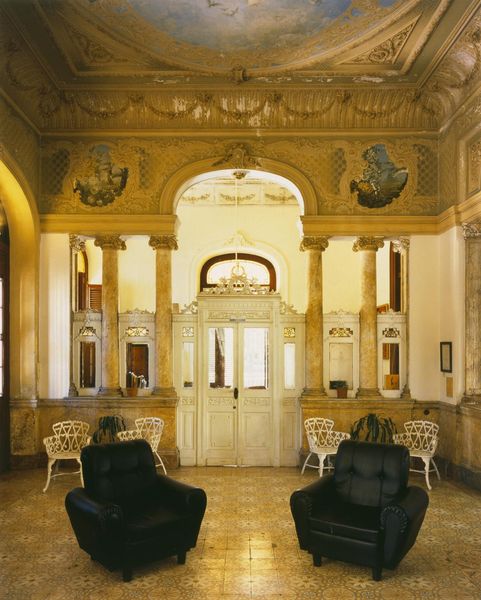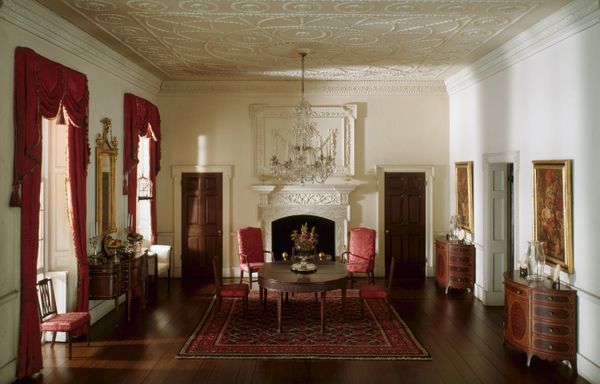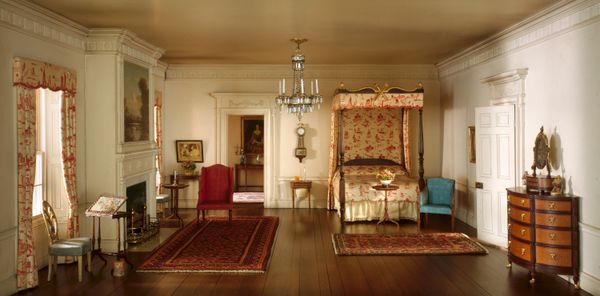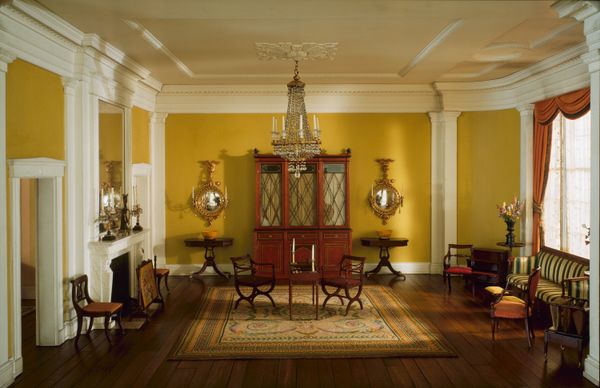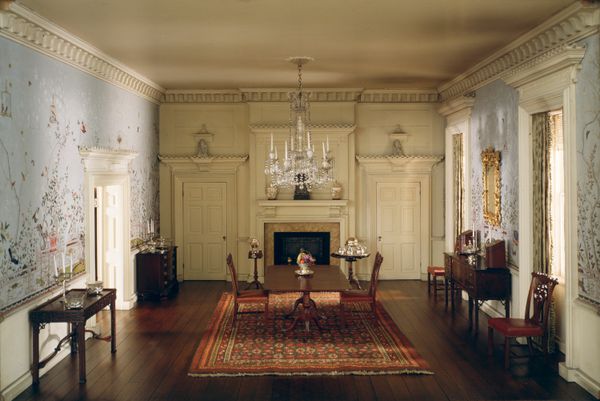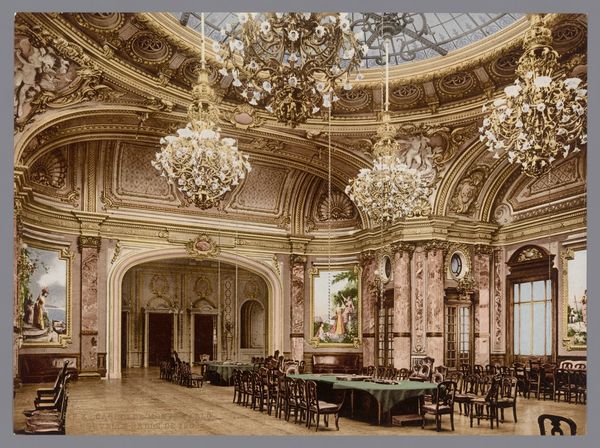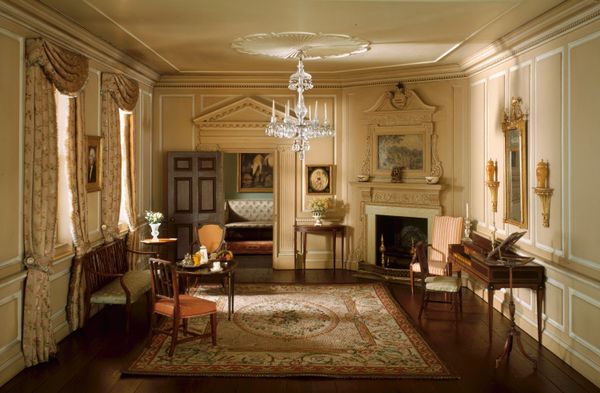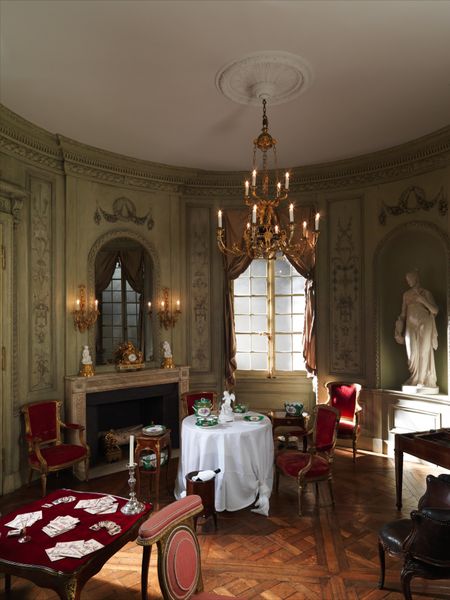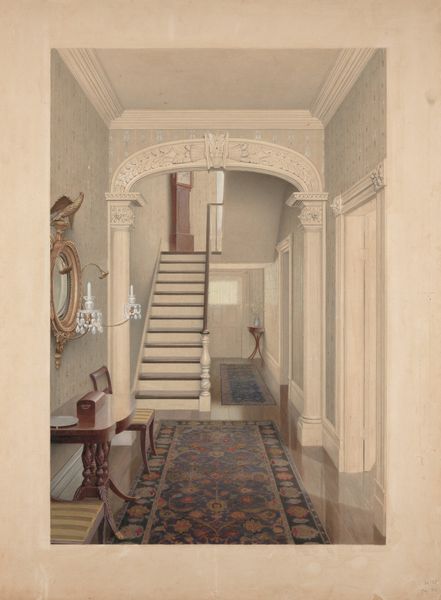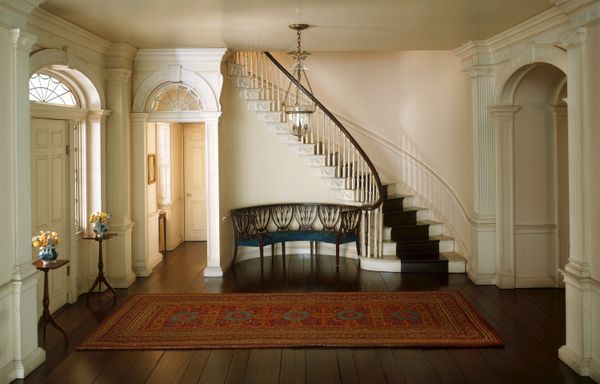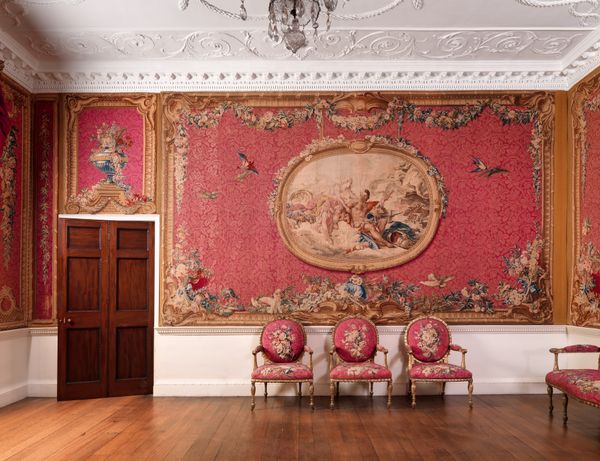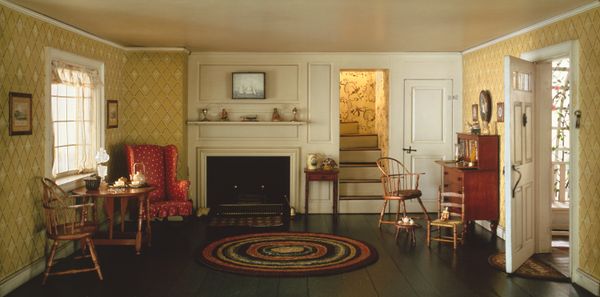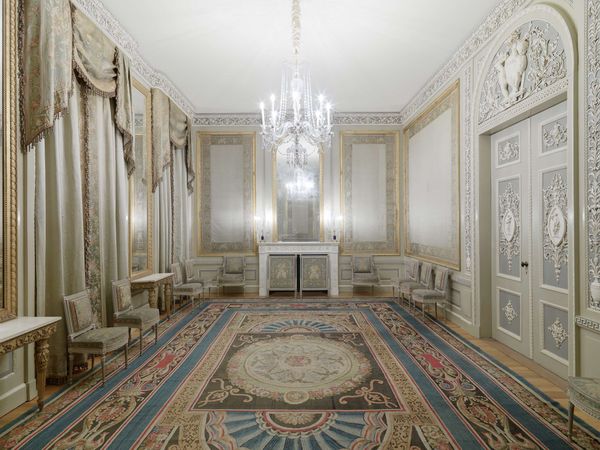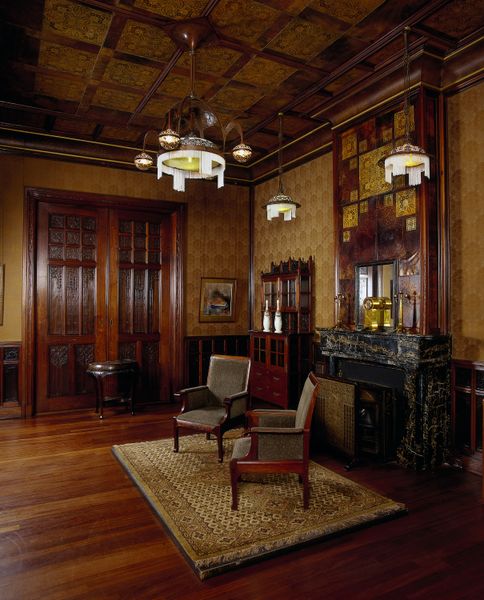
E-11: English Entrance Hall of the Georgian Period, c. 1775 c. 1932
0:00
0:00
Dimensions: Interior: 15 3/4 × 27 × 14 1/2 in. (39.375 × 67.5 × 36.25 cm) Scale: 1 inch = 1 foot
Copyright: Public Domain
Curator: Immediately, I sense a profound sense of stillness and order, an almost mathematically precise composition governing the interior space. Editor: Indeed. What we're observing is a photograph taken around 1932 by Narcissa Niblack Thorne. It captures her meticulously crafted miniature, titled "E-11: English Entrance Hall of the Georgian Period, c. 1775," which resides here at the Art Institute of Chicago. Curator: A miniature! It's a shock to realize this isn’t a life-sized hall, which is quite the illusion. It has a monumental yet inviting feel, amplified by that archway that seems to act like a proscenium. Editor: Thorne was quite fascinated by historical accuracy, channeling neoclassical design. Think of the resurgence of classical forms – symmetry, geometric ornament—as an evocation of the grandeur and rationality of past empires. Curator: You know, it evokes something of a collective memory of a "refined" past. Look at the chair: while elegant, there's a slightly austere quality. It speaks to the Georgian era's fascination with restrained opulence and the construction of social hierarchy. Editor: Absolutely. And those meticulously placed decorative flourishes serve as signifiers, acting as almost coded emblems of wealth, status, and lineage—narratives crafted into the very walls and furnishings of this imagined entrance hall. It could signify entrance into knowledge or societal acceptance, so closely entwined in the upper class of Georgian society. Curator: I agree entirely. Considering Thorne's period, it would speak to a yearning, or perhaps an imagined experience, of stepping back into a supposedly more structured and sophisticated moment in time. Editor: It’s fascinating to consider the image both as a recreation and as a symbolic portal into the ethos of a period – perceived and interpreted anew. Curator: For me, that sense of meticulous control over form and decor reflects broader themes of societal control, and how deeply entrenched cultural meanings lie even within the most ornamental objects. Editor: Precisely. Through formal study of this piece, one comes face to face with architecture, miniaturization, photography, and memory. A confluence of many complex things!
Comments
No comments
Be the first to comment and join the conversation on the ultimate creative platform.
